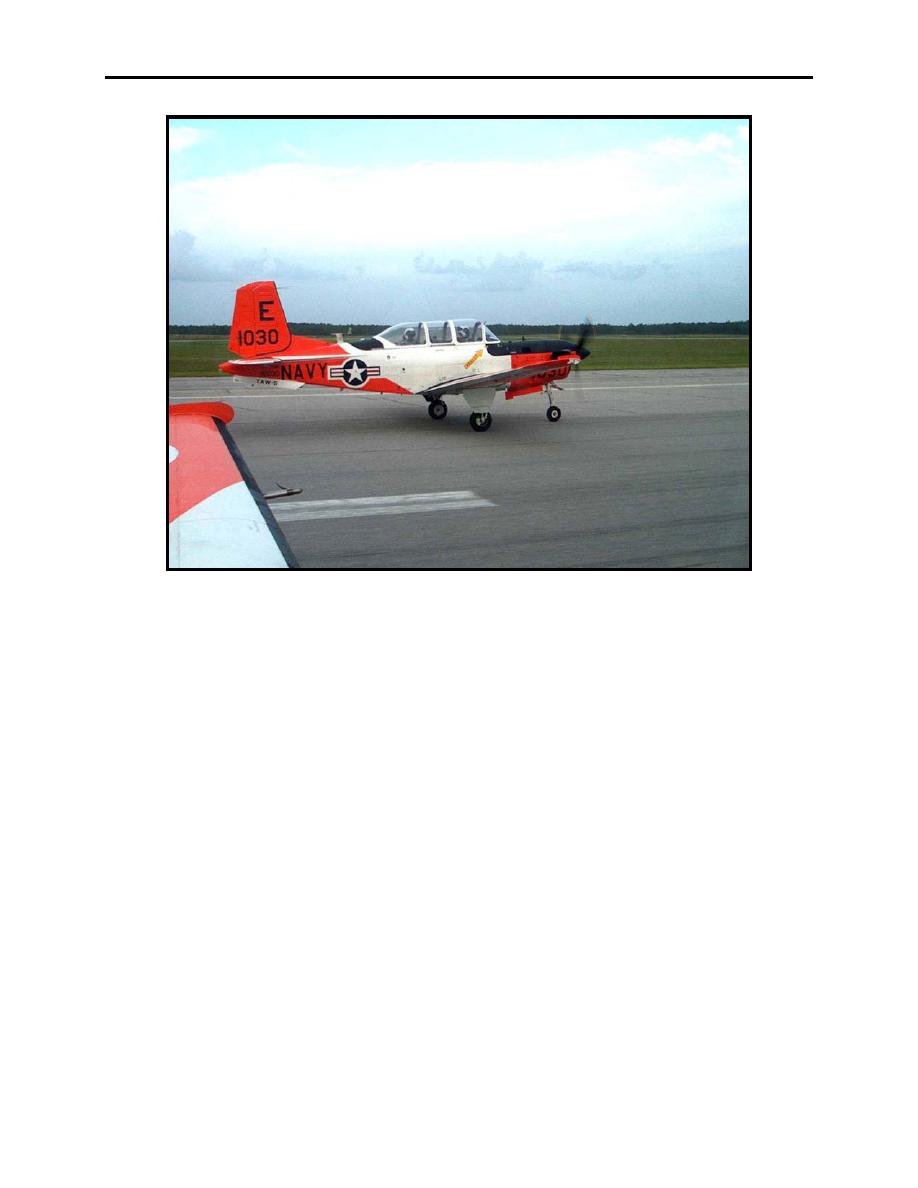 |
|||
|
|
|||
|
Page Title:
Figure 6-2 Section Takeoff Rotation |
|
||
| ||||||||||
|
|  CHAPTER SIX
T-34C PRIMARY FORMATION FLIGHT TRAINING
Figure 6-2 Section Takeoff Rotation
Use peripheral vision to detect any lateral movement and use smooth rudder inputs to maintain
the center of your side of the runway. If you're in position, your aircraft should lift off at
approximately the same time as Lead. Use Lead's nose strut extension to anticipate and match
his rotation rate and pitch attitude as you fly off the runway (Figure 6-2). If you are aft when
Lead rotates, ensure you have max power selected and delay your rotation slightly to accelerate
on the runway and catch up to Lead. If you're ahead of position nearing rotation, pull power
slightly and slowly work aft. Once safely airborne, retract the gear upon Lead's signal and move
into the parade position. Prebrief the pilot-not-flying to check the fuel caps for you. Any gear
malfunctions in either aircraft should be announced over the intraflight radio frequency.
Continue the departure in the Parade position until otherwise directed by Lead.
WARNING
Any time the Wingman passes the Lead aircraft during the takeoff
roll, with excessive relative motion, the Lead aircraft will pass
Dash-2 the lead over the radio and transition to the Wing position.
The new Lead shall continue with normal section takeoff and
departure procedures and must ensure the section remains clear of
traffic and obstacles. Should this situation arise, judgment and
action must be swift in both aircraft. Otherwise, there is potential
for both aircraft to be in nose high attitudes, with reduced power
6-4 SECTION TAKEOFFS AND APPROACHES/IFR OPERATIONS
|
|
Privacy Statement - Press Release - Copyright Information. - Contact Us |